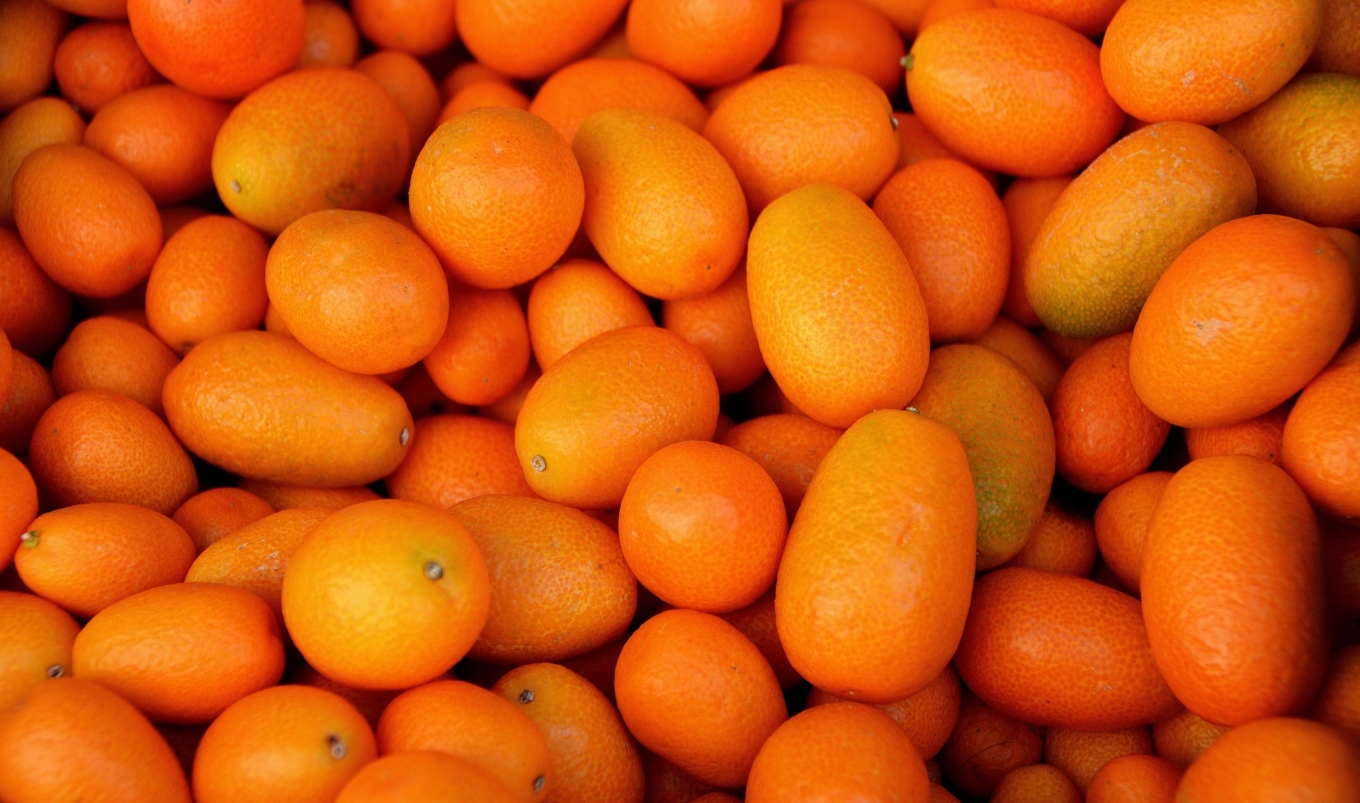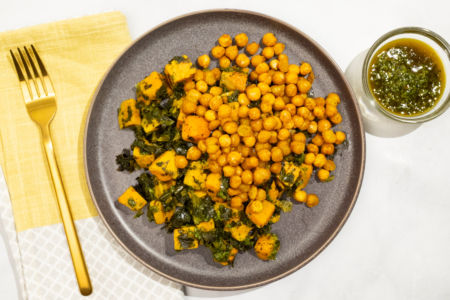Visualize an orange, but shrink it down to the size of a large olive – that’s a kumquat. This fruit belongs to the Rutaceae plant family along with some other well known citrus including lemons, limes, grapefruits, and oranges. Kumquats are native to Eastern Asia and are typically grown in warmer climates with their peak season occuring in December and January. When picking up a few for enjoying at home, try shopping at specialty stores or boutique grocers specializing in exotic produce.
Flavor

This little fruit certainly makes up for its size when it comes to flavor as it packs quite a punch. Unlike most citrus with sweet interiors and bitter skin, the juice inside a kumquat is tart and sour whereas the skin of the fruit is sweet. The entire kumquat is edible with close to no pith, making this a poppable snacking fruit that’s easy to eat straight from the tree. If the sour juice proves to be too strong, cut off the end of the fruit and squeeze out the juice leaving only the sugar-filled outside.
Storage and Usage

Due to their thin peel, kumquats should be eaten sooner rather than later after bringing them home. Store them in a brown paper bag in the fridge to keep them fresh. While they are delicious raw as a snack or sliced thinly in a salad, kumquats can also be cooked which helps to smooth out their sharp flavor. This fruit can be cooked down with sugar and water into marmalade or it can be candied for a unique addition to desserts and cocktails. Though they might not be ideal for juicing, kumquat liquor can certainly add some zestiness to any home bar.



